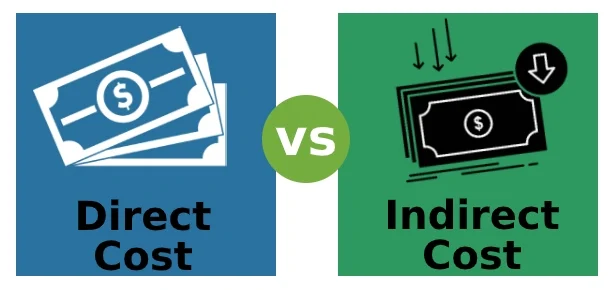Ever sat in a government contracts meeting where someone casually tossed out the terms “ODCs,” “indirect costs,” and “direct labor,” and you nodded along like you totally got it—but had zero clue what anyone was talking about?
You’re not alone.
Federal contracting is a world with its own language. It’s like going to a party where everyone speaks fluent FAR-speak and you’re still trying to figure out what “allocable” means. But don’t worry, we’re going to explain these budget buzzwords the way you wish someone had the first time—like you’re five (but smarter and with more at stake).
First, Meet the Three Characters of the Cost Party
Imagine you’re building a LEGO spaceship for the government. You’re not doing it alone — you’ve got a team, tools, a rented garage, snacks, and a guy flying in from Texas to help you install the turbo boosters.
Let’s break down your costs.
Direct Labor: The Builders
These are the folks actually snapping LEGO bricks together. They’re the ones doing the work that’s in your contract.
If your contract says, “Build this spaceship,” the person getting paid to build the spaceship is your direct labor.
- Their hours go directly to the job.
- You track them by name and by task.
- They’re usually the most visible and obvious cost.
Example:
Your engineer Alex spends 120 hours wiring the ship’s control panel. Those 120 hours are direct labor.
Indirect Costs: The Lights, The Rent, The Coffee Machine
While Alex is building the spaceship, someone’s paying the electric bill, managing payroll, and cleaning the bathroom. Those costs support the project but aren’t tied to a single task.
These are your indirect costs — they keep the operation running.
- Things like HR, accounting, software licenses, insurance, and office space.
- You can’t easily assign them to just one project.
- So, you allocate them across all projects using an indirect rate.
Example:
The $1,200 power bill lights up all your projects, not just the spaceship. That’s indirect.
Other Direct Costs (ODCs): The Turbo Booster Specialist from Texas
Now let’s say you need someone really specific to help with the spaceship — like a certified turbo booster specialist. You fly them in, pay their hotel, rent special tools, and buy a one-time software license.
These aren’t labor, and they’re not part of your general overhead. But they’re clearly required for the job. That’s your ODC.
- ODCs are non-labor costs that are directly tied to the job.
- You can trace them back to a specific contract.
- They’re not always consistent, but they’re contract-critical.
Examples of ODCs:
- Travel and per diem
- Equipment rentals
- Materials and supplies
- Consultants or subcontractors hired specifically for one job
- Training, certifications, or licenses unique to the contract
Quick Recap – Think of It Like a Birthday Party
- Direct Labor: The person baking the cake. You’re paying them to do the thing.
- Indirect Costs: The cost of renting the kitchen and buying lightbulbs for the party hall.
- ODCs: The balloons, magician, or pony you hired for this specific birthday.
They all matter. But they serve different purposes.
Why This Matters in Government Contracts
You can’t just throw all costs into a pile and call it “the budget.” Federal contracts are governed by strict cost principles in the FAR (Federal Acquisition Regulation). Misclassify your costs, and you could:
- Lose out on reimbursement
- Trigger an audit red flag
- Overcharge the government (hello, False Claims Act)
Knowing the difference between these three buckets is crucial if you want to:
- Submit a clean, competitive proposal
- Get paid on time
- Stay off the DCAA’s radar
- Maximize your allowable cost recovery
How the Government Wants You to Report This
When you submit a cost proposal or invoice:
- Direct labor goes into its own line item.
- Indirect costs are calculated using pre-approved rates (like G&A or overhead).
- ODCs are listed out and often require detail: who, what, why, how much, and how it ties to the contract.
So, if you’re tossing travel costs into overhead — you’re doing it wrong.
If you’re billing software licenses without showing the connection to the scope — that’s a red flag.
Pro Tips for Contractors
- Label wisely. If it can be directly traced to one contract, it’s probably an ODC.
- Stay consistent. Don’t classify software as an indirect cost one month and an ODC the next.
- Document everything. ODCs require support — receipts, justifications, and audit-ready logs.
- Use tools. Accounting software like Deltek or Unanet helps segregate and track these costs with accuracy.
- Educate your team. A misclassified Uber ride can become a compliance headache fast.
Bottom Line
Understanding the difference between direct labor, indirect costs, and ODCs isn’t just about getting the vocabulary right. It’s about protecting your margins, keeping your contracts clean, and staying on the right side of federal compliance.
Because in government contracting, the money is good — but only if you play by the rules.
Want more smart, simple insights on federal contracting? Read our other articles or book a strategy call with Capitol 50. We’ll help you turn complex compliance into clear action.
If you don’t follow/subscribe us, then you’ll probably not going to ever see us.




